In this Issue
- Codling moth: updated spray dates table
- Woolly apple aphid: monitor trees for new cottony colonies and treat if found
- Blister mites on apple, pear: no action at this time of year
- Fire blight: watch for new infections starting 2 weeks after bloom
- Peach aphids: treat now, or ignore, as they will migrate away in mid to late June
APPLE, PEAR
Codling Moth
Updated codling moth treatment dates
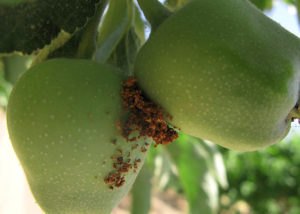
View a pdf of the spray timing table. Be sure to read the instructions at the top of the page, for how to read the table.
Note that the warmer-than-average weather of the past week has shifted the spray timing to earlier dates since the last post.
Treatment
- See this May 12 post for a table of spray options for backyard growers
- Options for commercial growers.
Woolly Apple Aphid
Inspect trees for cottony aphid colonies
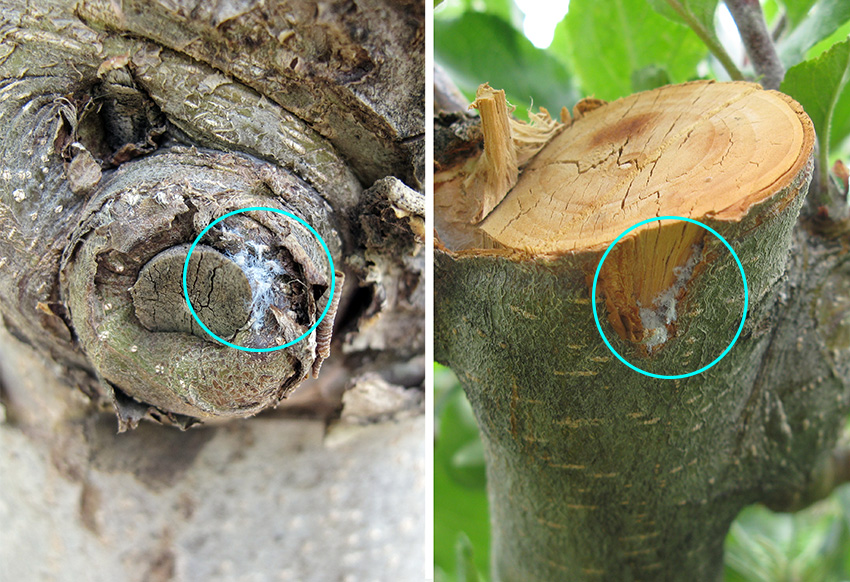
Woolly apple aphids will be showing up soon (if not already) on apple trees. It is important to scout your own trees to determine when and if a treatment is needed. Start by looking for aphids around old pruning scars or other wounds, and on root suckers.
These aphids are different from typical aphid species in that they feed on twigs, bark and roots, and have a cottony covering on their bodies.
Once they are found, they should be treated rather than waiting.
Treatment
If “woollies” are a problem every year, it is best to treat them early. Because of the aphid’s thick, waxy coating, it is important to spray the tree (or target individual colonies) to drip, to reach the aphid bodies.
- Backyard growers can use insecticidal soap+1% oil (organic), or mix 1% oil with Spectracide Triazicide or GardenTech Sevin, aimed directly at the colonies.
- Options for commercial growers
Appleleaf and Pearleaf Blister Mites – Backyard Trees Only
Moderate amounts of blisters do not reduce the vigor of the plant or affect fruit
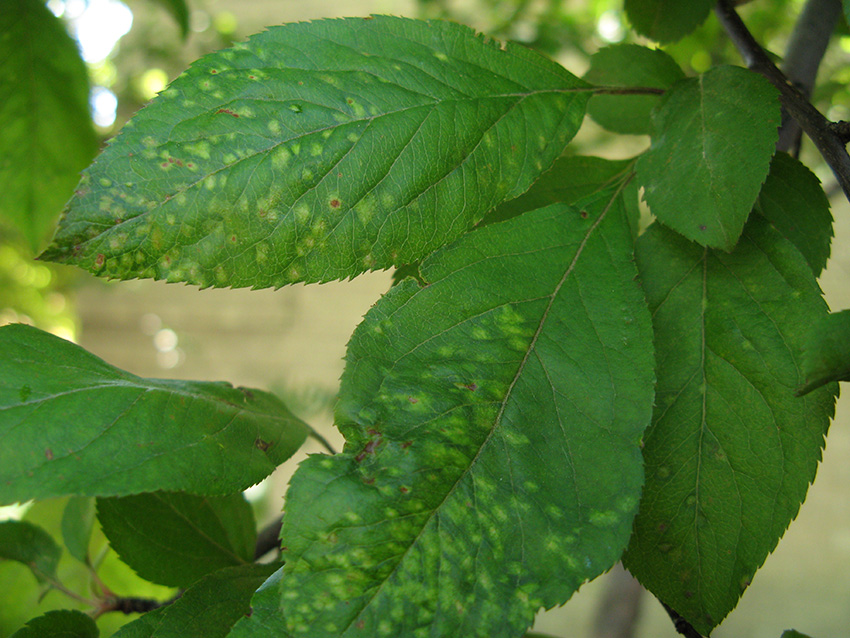
Blister mite damage is now visible on apple and pear leaves as leaf “spots”. Blister mites are arachnids that cause the leaf to form blisters containing dozens of these microscopic mites. The mites feed inside the blisters all summer.
On apple leaves, the blisters age to brown, and on pear leaves, they age to a dark brown/black. After harvest, the mites leave the blisters and migrate to leaf buds to spend the winter.
Treatment
At this time of year, the mites are protected inside the blisters so a spray treatment will not target them. The recommended timing is after harvest and close to leaf drop to prevent the mites the following year.
A material to apply after harvest includes carbaryl, sulfur, or oil.
Fire Blight – Post-Infection
Inspect fruit clusters starting 2 weeks after full bloom for infections
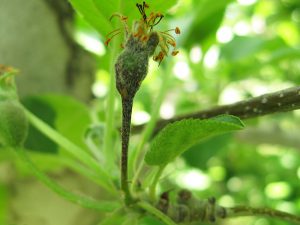
For locations where apples are still in bloom, watch the weather for rainfall and protect the flowers with an antibiotic where needed. (Do not apply an antibiotic after bloom.)
About two to three weeks after bloom, any fire blight infections that have occurred will start to show up. Look for flower/fruit stems that have turned brown or black, and wilted leaves. It is important to monitor your apple and pear trees every week, especially younger trees.
Post-infection Treatment
-
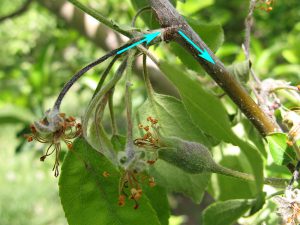
This fire blight infection is about 3 to 4 weeks old. The bacteria has already entered the branch, so it should be pruned 12 inches below the visible canker. Prune out all diseased plant parts as they are found. This will not only prevent the infections from expanding into the tree, but will also reduce the source of bacteria in the area.
- For infections that are caught early, remove twice the length of the visible symptoms.
- For infections that are caught late (that have expanded beyond the fruit cluster), it is important to make the pruning cut 10 to 12 inches beyond the visible symptoms.
- Prune in dry weather only. To be safe, wipe pruners with disinfecting wipes between cuts.
If moisture is predicted after pruning, remove the debris rather than leaving it in the orchard. If conditions are hot and dry, it is OK to leave the debris on the ground.
PEACH/NECTARINE, APRICOT
Peach Aphids
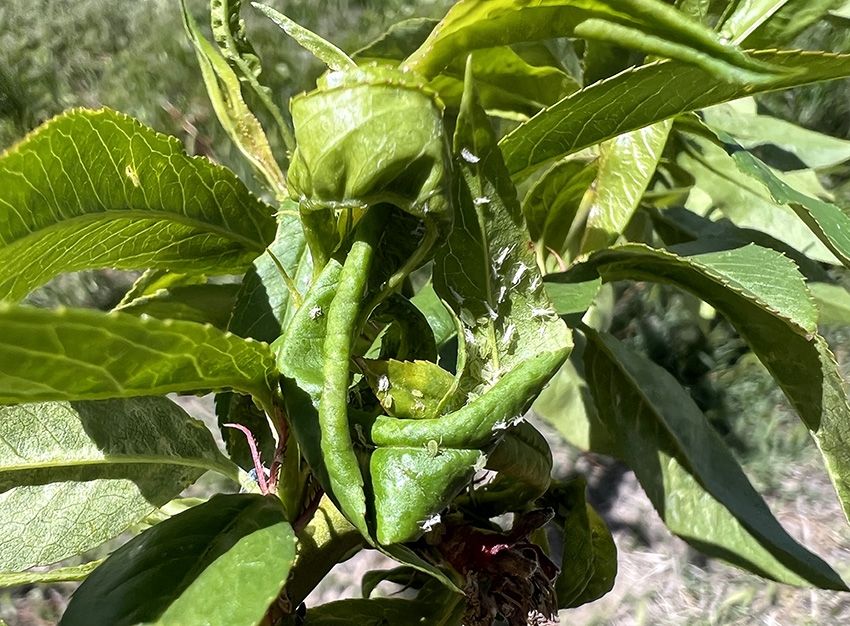
It is that time of year for aphids, including green peach aphid. They overwinter as eggs, and hatch around the time of bud break. Most fruit aphids only spend about six weeks feeding on the undersides of the foliage. They then migrate away from fruit trees to their summer hosts (vegetable plants and weeds).
Backyard trees can tolerate the aphid activity. This will help preserve and promote beneficial insects. In addition, the trees always push out a second flush of foliage and we often don’t even remember the aphid activity by mid-summer.
Treatment
- If necessary, residential growers can use insecticidal soap, but the soap must come into contact with the aphids, as they are tucked tightly within the leaf curls.
- Commercial growers can use Admire Pro, or a generic.
